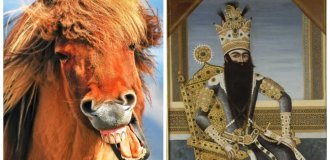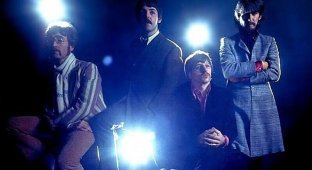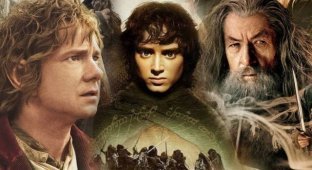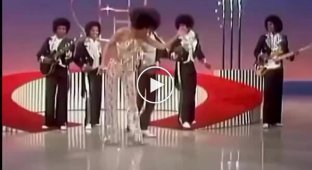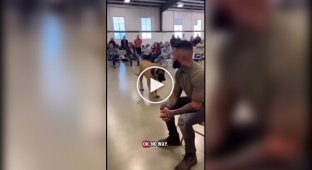10 cool details from "Lord of the Rings" that only the most attentive fans noticed (11 photos)
J. R. R. Tolkien's The Lord of the Rings books are known for their complex and multi-layered plots, which have inspired several film adaptations, from the cartoon and Peter Jackson's films to the Amazon series. 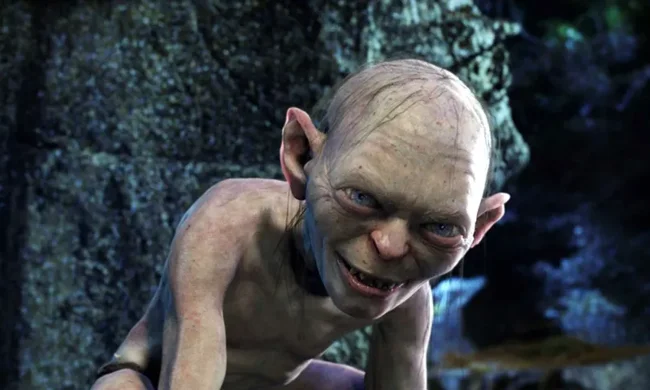
Jackson's films not only tell the adventures of Frodo, Aragorn, Gandalf, and other central characters, but also include numerous small details that greatly enrich the plot and deepen the characters' personalities.
These nuances have been noticed over the years only by rare fans, who actively share their findings with other fans of the franchise.
Gandalf's Secret Pipe 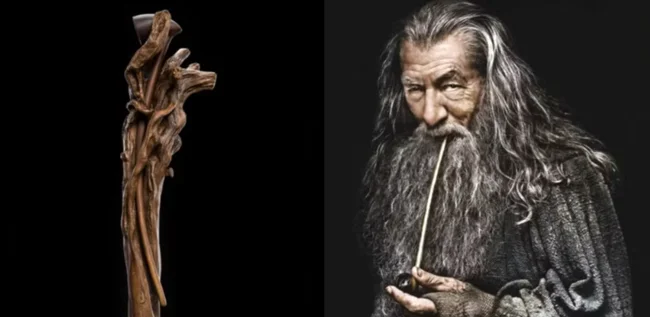
Gandalf is a Maia, a being close in nature to a deity or angel in Tolkien's world. He arrived in Middle-earth in the guise of an old wizard to help in the fight against Sauron, but, finding himself among mortals, he discovered that he liked some earthly pleasures.
The most famous of these was a pipe with a "potion" that he believed was invented by the Shire hobbits - although in reality, of course, we are talking about something like potent tobacco.
Gandalf loved it so much that it seems he could not do without his pipe. One of the viewers drew attention to an interesting detail: "If you look closely, you can see that Gandalf carries his pipe right in his staff."
However, this only applies to the staff of Gandalf the Grey - after his rebirth as Gandalf the White, he apparently had to find a new place to store his favorite vice.
Mr. Underhill 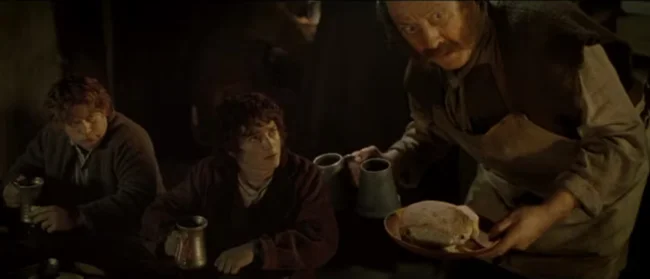
Before The Lord of the Rings, Tolkien wrote The Hobbit, which chronicled the adventures of Bilbo Baggins. There are many connections between the two works, from the introduction of familiar characters to the central artifact, the One Ring.
However, there is another, less obvious connection that many fans may have missed.
In The Hobbit, Bilbo, trying to hide his identity from the dragon Smaug, says that he is "from under the hill." The dragon from this point onwards begins calling him "Mr. Under-the-Hill".
One viewer noted that the nickname reappears in The Fellowship of the Ring, when the hobbits arrive at the Prancing Pony and use "Mr. Underhill" (literally, Mr. Under-the-Hill) as a nickname for Frodo.
Sauron's symbol on the Nazgul's equipment 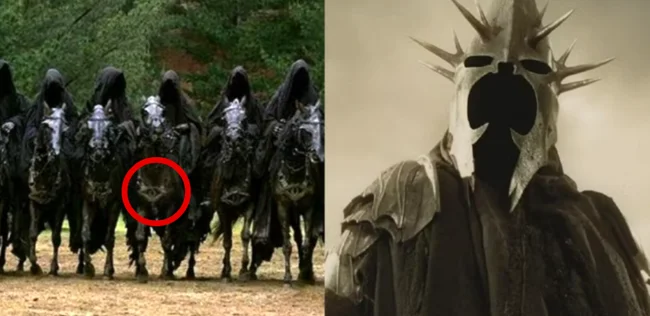
In The Lord of the Rings books, Sauron is described as having an "all-seeing eye" - metaphorically, as a symbol of his all-pervading control.
Peter Jackson's adaptations took this idea literally, with the iconic fiery eye shining atop Barad-dûr, becoming one of the most recognizable symbols of evil in both Middle-earth and pop culture.
But one viewer pointed out a subtle but significant design detail that further underscores the Eye of Sauron's iconic nature: "The Nazgûl horses in The Lord of the Rings have the Eye of Sauron on their tack."
While this detail may not have played a direct role in the plot, it demonstrates the care Jackson and his team took in creating the visual world. It also serves as a constant reminder of who these riders of darkness serve.
The Death of Boromir 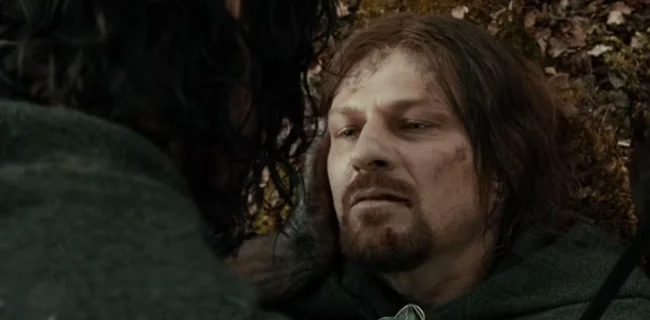
Despite Boromir attempting to take the Ring from Frodo, he redeemed himself by giving his life to protect Merry and Pippin from the orcs. This act showed his kind and honest heart, but the forces were unequal.
His death was one of the most touching moments for both the heroes and the audience, and the sad music that accompanied the scene only increased the emotional impact.
However, there was more to the music than ordinary viewers could notice. Thus, in the scene of Boromir's death, an Elven song is heard, the translation of which reads: "I do not love the sword for its shine, nor the arrow for its swiftness. I love only what they protect."
These words are a direct quote from the book, spoken by Faramir, Boromir's brother, and give death an even deeper, philosophical meaning.
Comparison of Boromir and Isildur 
Isildur was the first man to possess the One Ring after the fall of Sauron, and his story became a sad example of how the strength of men often succumbs to temptation.
He refused to destroy the Ring when he had the chance, and instead chose to keep it for himself. But the Ring betrayed him, and he died, shot in the back by three arrows.
And the film beautifully shows the similarities between Isildur and Boromir - both succumbed to the temptation of the Ring. However, the key difference is that, unlike Isildur, who was blind to the evil of the Ring, Boromir understands how it corrupts him, and decides to fight the orcs, protecting Frodo and the hobbits.
Although his life was also cut short by three orc arrows, he met his death with dignity, face to face, proving that he realized his mistakes and did not try to run from them.
Boromir's Bracers 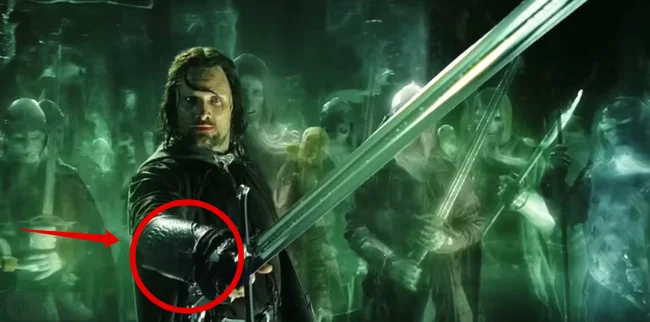
Boromir was one of the first truly tragic characters in the trilogy. He embodied the weaknesses of human nature - pride, the desire for power - but also demonstrated genuine courage and sincere kindness.
His relationship with Aragorn was especially important: the films show how Boromir gradually accepts Aragorn as his king, helping him eventually accept his destiny.
And Boromir's influence on Aragorn goes beyond words and actions. Throughout The Fellowship of the Ring, Boromir wears leather bracers with an image of the White Tree of Gondor.
After Boromir's death, Aragorn takes up the bracers and begins wearing them himself, presumably to honor his memory. He continues to wear them until the end of the trilogy, which becomes a subtle but powerful symbol of continuity and respect.
Frodo and Sam's Companionship 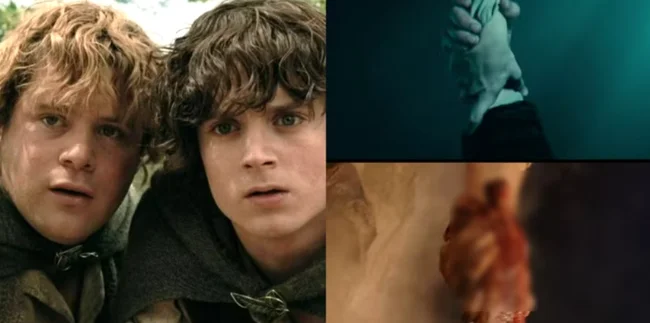
There are many events that take place between The Fellowship of the Ring and The Return of the King, but there are several parallels that can be found in the two films that highlight the depth and value of the friendship between Frodo and Sam.
If you look at these stills from both films, you can see how similar two key scenes are: The scene where Frodo saves Sam in The Fellowship of the Ring mirrors the scene where Sam saves Frodo in The Return of the King.
These parallels demonstrate that both hobbits were equally important to the mission, and that neither could have done it without the other. Their mutual help is the foundation of the story.
Gollum's Eyes 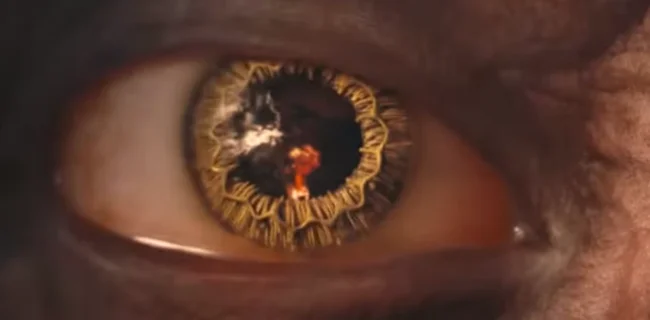
The profound loneliness that Sméagol experienced while hiding in the caves with the Ring led to the disintegration of his personality. Over time, he forgot who he was before and began calling himself Gollum.
However, when Frodo reminds him of his past, a struggle between the two entities - Smeagol and Gollum - awakens within him.
And here it is difficult to notice an interesting visual detail: his pupils are small when he is in the form of Gollum, but become much larger when he transforms into Smeagol.
This difference is visible throughout all three films and helps viewers visually determine which of the personalities is currently dominant - the dark or the lighter one.
Gimli's Sense of Smell 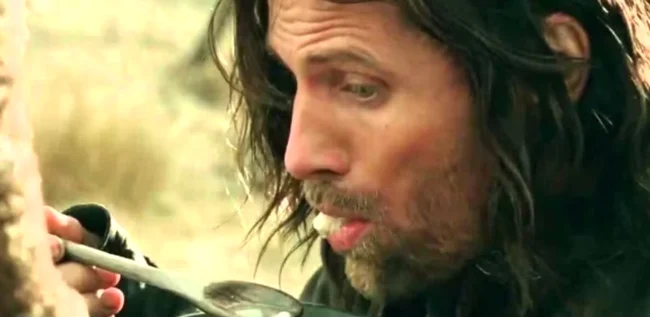
While most scenes in The Lord of the Rings trilogy are serious and dramatic, there was some humor in the films. One of the audience's favorite scenes was the one where Eowyn cooks a stew for the party, but Aragorn's reaction makes it clear that her cooking skills leave much to be desired.
Interestingly, before offering the stew to Aragorn, Eowyn first offers it to Gimli, who refuses. This seems odd, because dwarves are known to love good food.
However, Gimli also said that dwarves have a very good sense of smell, which means he immediately realized that the soup was spoiled. That is why he chose to refuse - not out of politeness, but out of self-preservation.
Frodo's Oath 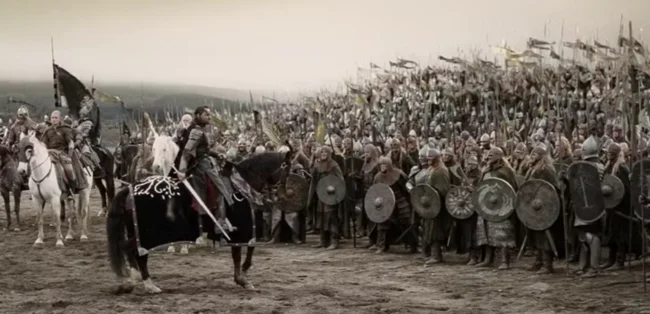
Composer Howard Shore put many hidden meanings and references into the music for The Lord of the Rings, and attentive fans never tire of finding them.
One of them drew attention to one of the most touching details: in The Fellowship of the Ring, Aragorn swears to protect Frodo, and his words sound like a solemn promise.
In The Return of the King, when Aragorn bursts through the Black Gate, the choir sings the same words, but in Sindarin.
This musical leitmotif becomes a powerful reminder of Aragorn's loyalty to his word and why he is willing to sacrifice himself to save Middle-earth.










